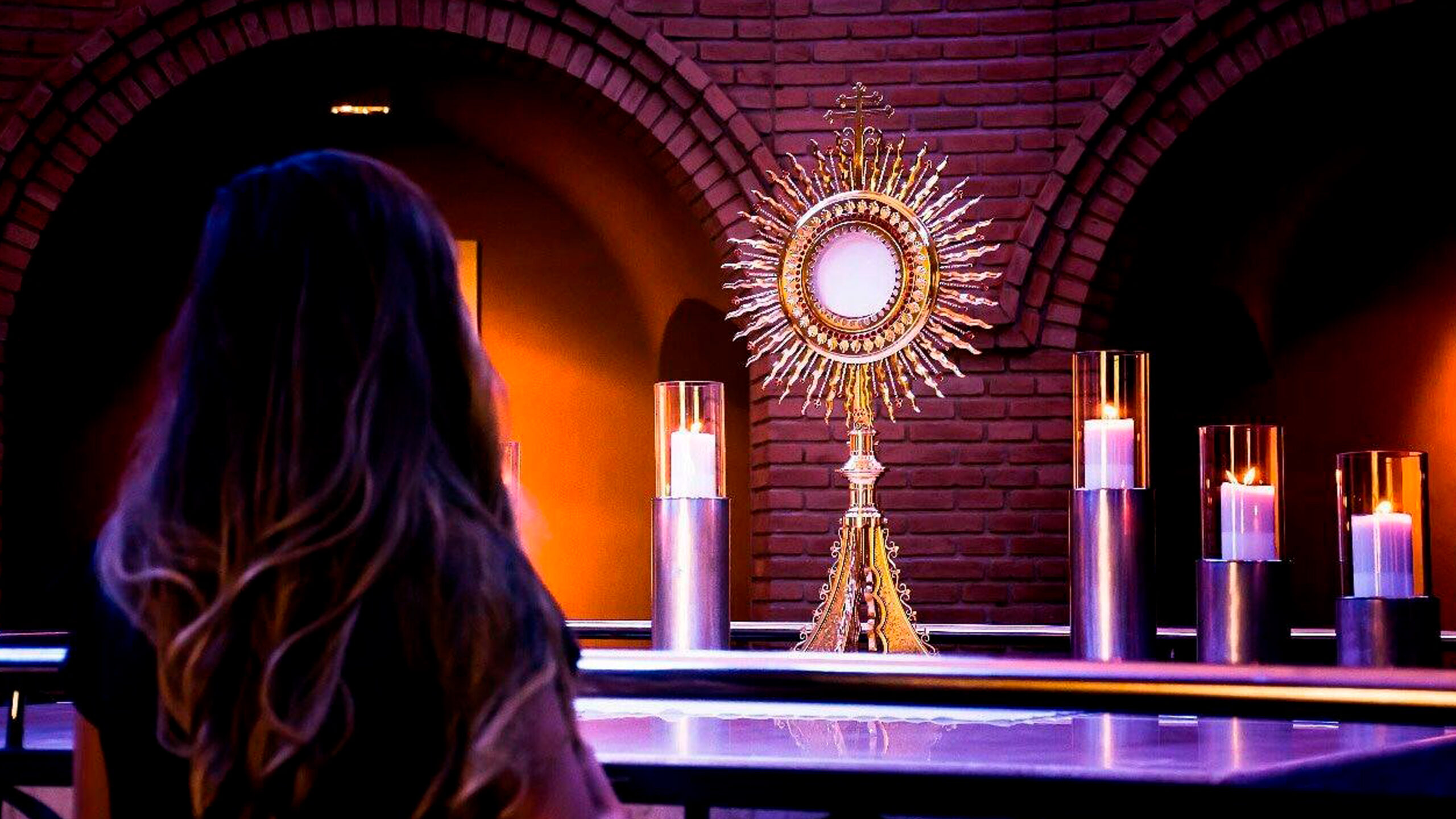Venerable Fulton J. Sheen was famous for his daily Holy Hour before the Blessed Sacrament. On his ordination to the priesthood, he made a vow to make a Holy Hour every day of his life. He kept this promise to the very end. He recommended priests, religious, and laity alike to try, if possible, to make a daily or at the very least weekly Holy Hour since our Blessed Lord asked for it in the Garden of Gethsemane: “Then he said to them, ‘My soul is sorrowful even to death. Remain here and keep watch with me’ . . . When he returned to his disciples he found them asleep. He said to Peter, ‘So you could not keep watch with me for one hour?’” (Matthew 26:38, 40).
The Holy Hour is often systematized by theologians in order to help one structure their time so that it may be well spent with the Lord. Fulton Sheen made three recommendations for those making the Holy Hour, which during this time of Eucharistic Revival may prove helpful to many. These recommendations were given in his book The Priest is Not His Own and were originally intended for priests but can also be applied to the laity as well.
The first recommendation is to go to the Holy Hour as if you were going to talk with a friend:
Some spiritual writers recommend a mechanical division of the hour into four parts: thanksgiving, petition, adoration, and reparation. This is unnecessarily artificial. An hour’s conversation with a friend is not divided into four rigid segments or topics. The Holy Hour is not an official prayer; it is personal. . . . The unique heart must make up the content of his prayer.
For Sheen, the Holy Hour is time spent with our Lord in conversation. It is also time spent talking with a Friend. Indeed, God tells us we are his friends in the Gospel of John: “You are my friends if you do what I command you. I no longer call you slaves, because a slave does not know what his master is doing. I have called you friends, because I have told you everything I have heard from my Father” (John 15:14-15). We do not go up to our friends with an already set itinerary on what we are going to talk about. Our conversation is organic and flows from the heart.
The second recommendation is to bring and read Sacred Scripture or a commentary on Scripture while making the Holy Hour:
Read the Scriptures or a commentary or any solid spiritual book, until a thought strikes you. Then close the book, and talk to Our Lord about it. But do not do all the talking. Listen also. “Speak on, Lord, Thy servant is listening” (1 Kings 3:10) must not be “Listen, Lord, Thy servant speaketh.” We learn to speak through listening, and we grow in love of God through listening.
Since Scripture is the Word of God, God speaks to us through it. A great and ancient practice for praying with the Bible and learning to listen to the Lord is lectio divina. Numerous saints and desert Fathers have recommended this practice. Lectio Divina is divided into a number of parts. In Verbum Domini, Pope Benedict XVI explained the various steps:
- Lectio: Read the text. What does the biblical text say in itself?
- Meditatio: What does the biblical text say to me?
- Oratio: What is my response to our Lord’s Word?
- Contemplatio: What conversion of mind, heart, and life is the Lord asking of me?
- Actio: Movement of the believer to offer his or her life as a gift for others in charity.
The third and final recommendation that Sheen offers is to make the Holy Hour on one’s knees (health and age providing).
Sheen begins by discussing the various postures of standing, sitting, and kneeling during prayer. He notes, however, that when our Lord made the very first Holy Hour in the Garden of Gethsemane, he is recorded as kneeling: “He advanced a little and fell prostrate in prayer, saying, ‘My Father, if it is possible, let this cup pass from me; yet, not as I will, but as you will’” (Matthew 26:39). With Christ himself as the prime example, Sheen concludes by stating: “The conclusion is obvious. It is best to kneel during the Holy Hour, for it indicates humility, follows the example of Our Lord in the Garden, makes atonement for our failings and is a polite gesture before the King of kings.”
All three of these recommendations are just that—recommended. There is no sure or fixed system for making the Holy Hour. Later in life, Sheen would write that there are no rules for the Holy Hour except to show up and do it.
